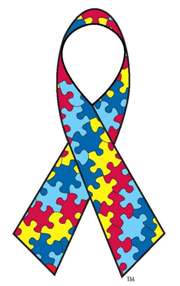
April is Autism Awareness Month, and according to a report released in late March by the Centers for Disease Control, Autism Spectrum Disorder has become more prevalent in the last ten years. Currently, one in every 68 children are diagnosed with autism in the United States.
This is a dramatic increase from 2002, when the rate was one in every 150 children, and individuals with autism made up only two percent of the California’s special education system. In 2009, students with autism made up eight percent of the special education system, and the number is still rising.
According to the CDC, autism is the fastest growing diagnosis in the California Special Education System. Kim Cochrane, a Special Education teacher through the Marin County Office of Education, said that the increasing number of autistic kids in Redwood’s Special Education program has reflected this trend.
“We’re seeing these kids everywhere, we keep opening classrooms to deal with that population of kids,” Cochrane said.
Barry Benda, Chief Operating officer of Lifehouse, an organization that runs a recreational integration program and residential service for those with disabilities, said he has also seen a dramatic increase in the number of autistic people referred to the Lifehouse program.
There are commonly accepted beliefs as well as conflicting research from researchers in the field of Autism Spectrum Disorder, but the true cause of autism has yet to be proven.
There are numerous speculations over the causes behind the increase. Cochrane said that she believes some of the increased rate of autism is due to improved diagnostic techniques.
“What they’ve been able to do is remarkable—when we learned about the genetic code, it gave us so much more information. So based on that, we’ve been able to get so much more information about trying to understand autism and what’s causing it,” Cochrane said.
Behavioral and developmental pediatrician Tina Gabby, M.D., located in Corte Madera, said that there is a strong scientific correlation between genetic factors and the prevalence of autism.
“Children who have a sibling with an autistic spectrum disorder are at a higher risk of having an autism spectrum disorder,” Gabby said. “Given the fact that we have those twin studies and sibling studies, it makes it scientifically very reasonable to conclude that there is a genetic factor.”
According to Katie Peter, a special education teacher who works with autistic students for the Marin County Office of Education, early detection of the disorder is crucial to the educational success of the child.
There is no technological test to determine whether a child has autism. Instead, an evaluation is performed by a psychologist, psychiatrist, or other professional. There are numerous diagnostic evaluations that can be done to help determine a diagnosis of autism, including the DSM-5 Diagnostic Criteria, the Autism Diagnostic Observation Schedule, the Autism Diagnosis Interview, and the Childhood Autism Rating Scale (CARS).
According to Gabby, the examination evaluates children for different criteria. “When you see a child for assessment, you want to review those criteria and determine if there are deficits in functioning of several core areas—the social domain, the communication domain, and the behavioral domain,” she said.
Autism is also diagnosed on a spectrum, and according to Gabby, while autism is more easily identified in some children, for others it is less obvious.
“There’s a real spectrum of how a child looks. It often depends on their ability to use language, their IQ and their relationship capacity or their sociability. A child who has significant cognitive impairment, no language, and has a lot of self-stimulatory behavior may be on one end of the spectrum,” said Gabby. “Whereas there may be a person [on the spectrum] at your high school who may be eccentric or quirky, has good language skills, or is a bit wooden or stiff in relation to people.”
An early step in determining the path of a student once they are diagnosed with Autism Spectrum Disorder is developing an Independent Educational Plan (IEP).
“It’s a team collaboration,” Peter said. “Parents, teachers, future placements, administrators, program managers, are all there at that meeting. There they discuss what is the best placement for that student and if they are all in agreement then they move forward to that placement.”
In Marin County, approximately 6.9 percent of the students enrolled in special education program are on the autism spectrum. According to Cochrane, who teaches more severely autistic students, many students suffer from multiple disorders, for example cerebral palsy or Fragile X Syndrome.
According to the CDC, one in 63 Caucasian children are identified as having Autism Spectrum Disorder, versus one in 81 African American children and one in 93 Hispanic children.
Additionally, there is a significant gender gap between boys and girls diagnosed with autism. According to the CDC report, boys are almost five times more likely than girls to be diagnosed. Both Cochrane and Peter said that over their careers in Special Education, they have witnessed more boys coming through their programs with autism than girls.

















